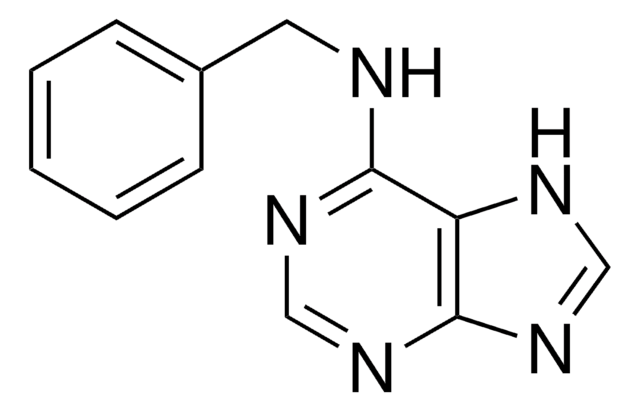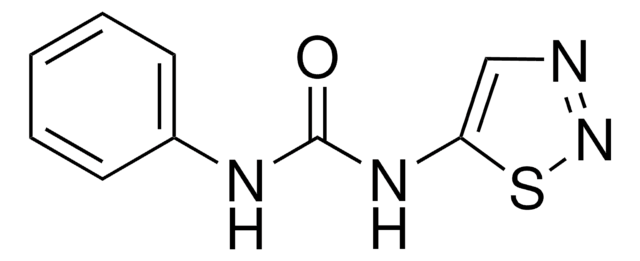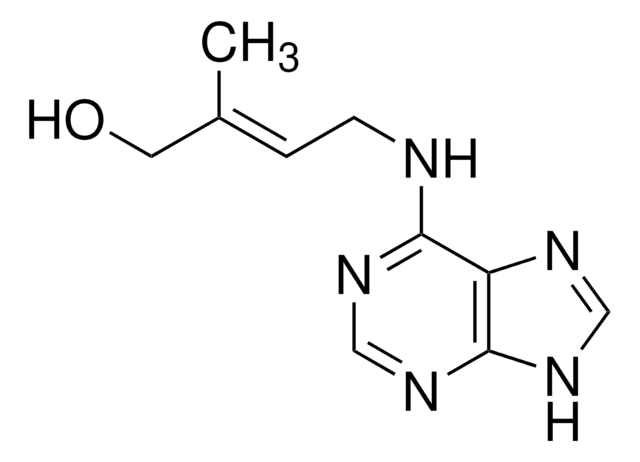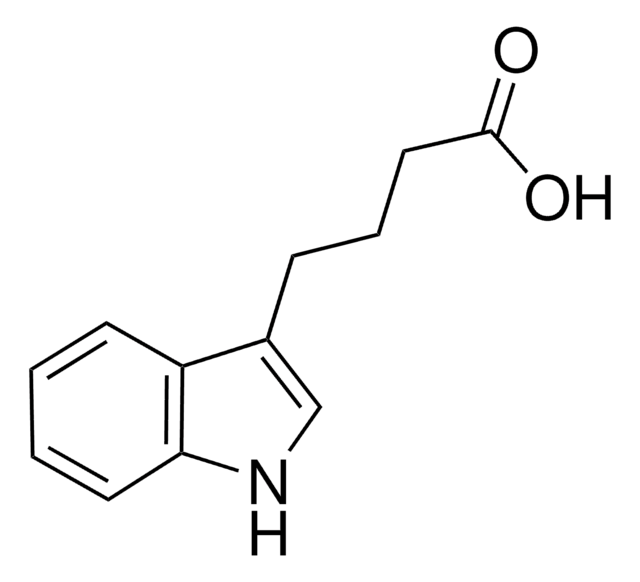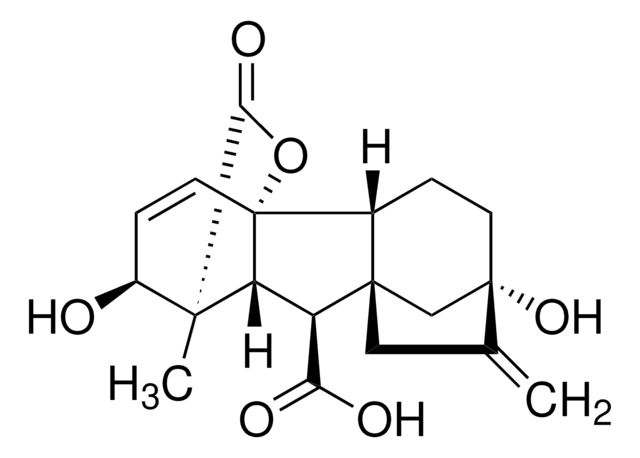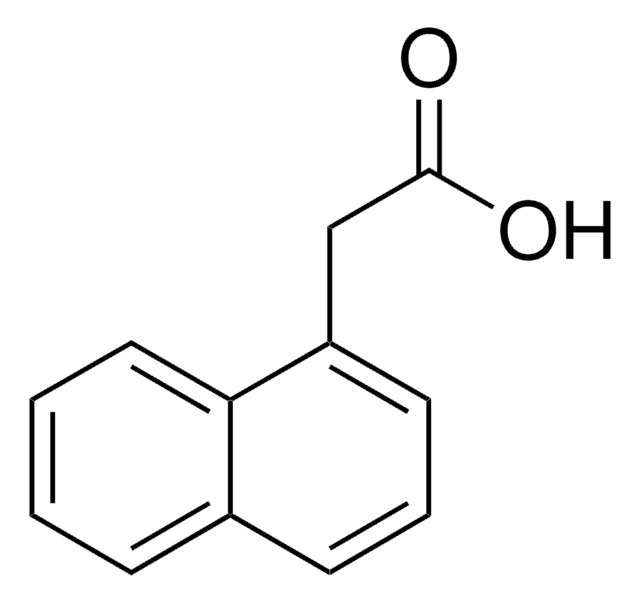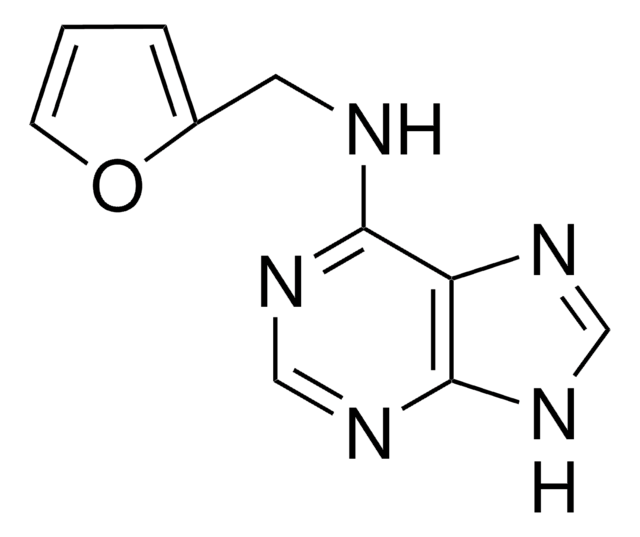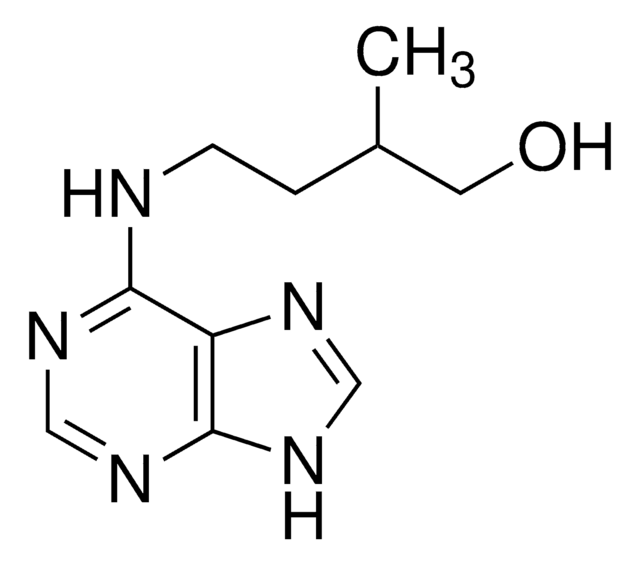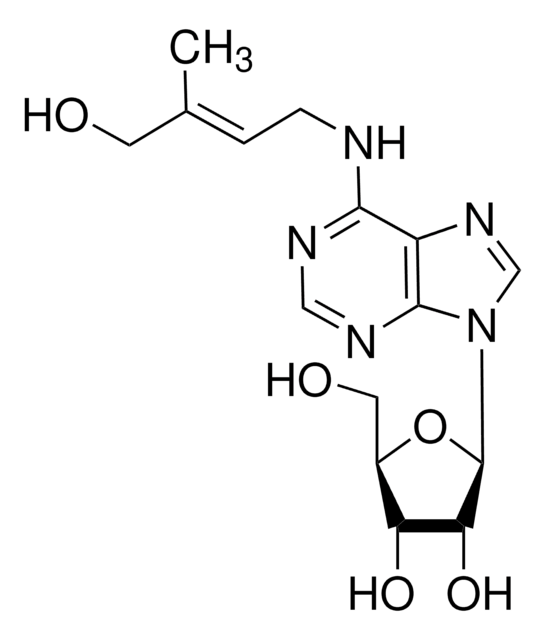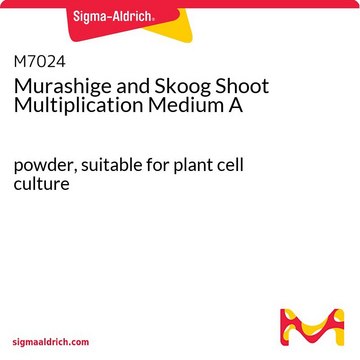Wszystkie zdjęcia(1)
Kluczowe dokumenty
D5912
6-(γ,γ-Dimethylallylamino)purine
suitable for plant cell culture, BioReagent, ≥90%
Synonim(y):
N6 dimetylallyladenina
Zaloguj sięWyświetlanie cen organizacyjnych i kontraktowych
About This Item
Wzór empiryczny (zapis Hilla):
C10H13N5
Numer CAS:
Masa cząsteczkowa:
203.24
Numer MDL:
Kod UNSPSC:
10171502
Identyfikator substancji w PubChem:
NACRES:
NA.72
Polecane produkty
linia produktu
BioReagent
Poziom jakości
Próba
≥90%
Formularz
powder
metody
cell culture | plant: suitable
Zastosowanie
agriculture
temp. przechowywania
−20°C
ciąg SMILES
C\C(C)=C\CNc1ncnc2[nH]cnc12
InChI
1S/C10H13N5/c1-7(2)3-4-11-9-8-10(13-5-12-8)15-6-14-9/h3,5-6H,4H2,1-2H3,(H2,11,12,13,14,15)
Klucz InChI
HYVABZIGRDEKCD-UHFFFAOYSA-N
Szukasz podobnych produktów? Odwiedź Przewodnik dotyczący porównywania produktów
Zastosowanie
6-(γ,γ-Dimethylallylamino)purine: has been used as a standard in ultra-high performance liquid chromatography to compare the chromatogram of transgenic and wild type (WT) crude hormone extracts to quantify cytokinin levels, may be used as a component of the Murashige and Skoog (MS) medium for callus culture and in vitro shoot induction, may be used as a supplement in MS medium to make simplified shoot induction medium (SIM) to treat explants for shoot induction
Działania biochem./fizjol.
6-(γ,γ-Dimethylallylamino)purine (2iP) is a bacteria-derived riboside cytokinin used to grow plant tissues such as tobacco and soybean callus. 2iP is a precursor of the cytokinin Zeatin. 2iP can also be used in Schenk and Hildebrandt medium to support in vitro propagation of micro shoot cultures from shoot tips of Genista plants.
Ta strona może zawierać tekst przetłumaczony maszynowo.
Kod klasy składowania
11 - Combustible Solids
Klasa zagrożenia wodnego (WGK)
WGK 3
Temperatura zapłonu (°F)
Not applicable
Temperatura zapłonu (°C)
Not applicable
Środki ochrony indywidualnej
Eyeshields, Gloves, type N95 (US)
Wybierz jedną z najnowszych wersji:
Masz już ten produkt?
Dokumenty związane z niedawno zakupionymi produktami zostały zamieszczone w Bibliotece dokumentów.
Klienci oglądali również te produkty
Wenzislava Ckurshumova et al.
The New phytologist, 204(3), 556-566 (2014-10-03)
In vitro regeneration of complete organisms from diverse cell types is a spectacular property of plant cells. Despite the great importance of plant regeneration for plant breeding and biotechnology, its molecular basis is still largely unclear and many important crop
G A Miura et al.
Plant physiology, 44(3), 372-376 (1969-03-01)
A 6-(gamma,gamma-dimethylallylamino) purine-like compound was found in the culture medium of Rhizopogon roseolus, which had been shown earlier to synthesize zeatin. The role of 6-(gamma,gamma-dimethylallylamino) purine as a precursor of zeatin was studied. Rhizopogon was furnished with 6-(gamma,gamma-dimethylallylamino) purine-8-(14)C. Cochromatography
Maria Luczkiewicz et al.
Zeitschrift fur Naturforschung. C, Journal of biosciences, 60(7-8), 557-566 (2005-09-17)
A two-stage method for in vitro propagation of six Genista species from shoot tips was developed. Multiple microshoot cultures were obtained by growing the shoot tip explants on Schenk and Hildebrandt medium supplemented with 9.84 microM 6-(gamma,gamma-dimethylallylamino)-purine and 0.99 microM
E Strzelczyk et al.
Acta microbiologica Polonica, 34(2), 177-185 (1985-01-01)
Studies on the effect of post culture liquids of actinomycetes on cytokinin-like substances production by mycorrhizal fungi have revealed that actinomycete metabolites inhibited or stimulated the synthesis of these compounds. The results of chromatographic analyses suggest, that substances stimulating the
Chieh-Han Pu et al.
Journal of food and drug analysis, 26(2), 637-648 (2018-03-24)
A multiresidue analytical method was developed for grapes for the following 24 plant growth regulators: 1-naphthylacetamide, 2,3,5-triiodobenzoic acid, 2,4,5-T, 2-naphthoxyacetic acid, 3-indolylacetic acid, 4-(3-indolyl)-butyric acid, 4-chlorophenoxyacetic acid, 4-nitrophenol, 6-benzylaminopurine, N6-isopentenyladenine, butralin, chlormequat chloride, chlorphonim-Cl, cloprop, forchlorfenuron, gibberellic acid 3, gibberellic acid
Nasz zespół naukowców ma doświadczenie we wszystkich obszarach badań, w tym w naukach przyrodniczych, materiałoznawstwie, syntezie chemicznej, chromatografii, analityce i wielu innych dziedzinach.
Skontaktuj się z zespołem ds. pomocy technicznej
